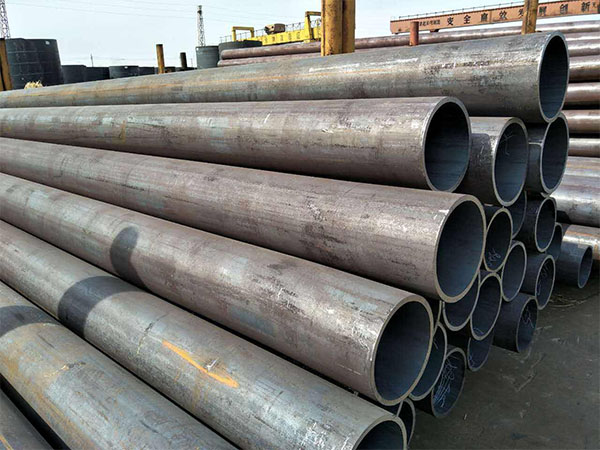Carbon steel pipe grades are classified according to the chemical composition, mechanical properties (such as yield strength, tensile strength) and use of the material. Different international standards define specific grade requirements to ensure the suitability of the steel pipe under specific conditions (such as pressure, temperature, corrosion environment).
Main standards and corresponding grades
The following are common international standards and their carbon steel pipe grades:
1.ASTM Standard (American Society for Materials and Experiments)
ASTM A53
Application: Suitable for the transmission of steam, water, gas and air and other low and medium pressure media, can also be used for structural purposes.
Grades: There are usually three grades, Gr.A (lowest strength), Gr.B (medium strength), and Gr.C (higher strength). Gr.B is more commonly used in pressure pipelines.
Type: seamless pipe (Type S), welded pipe (Type E, Type F).

ASTM A106
Uses: Mainly used in high temperature and high pressure transport media, such as power plant boilers, oil refining and chemical equipment.
Grade: Including Gr.A, Gr.B and Gr.C, Gr.B is widely used, its chemical composition and mechanical properties are more demanding.
Type: Designed for seamless carbon steel pipes.
ASTM A333
Application: Mainly used in low temperature environment (-45°C to +345°C).
Grade: Gr.1 to Gr.11 (e.g. Gr.6 for low temperatures of -45°C).
ASTM A335
Uses: Mainly used as high temperature seamless ferritic alloy steel pipe.
Grades: Gr.P1 to Gr.P91 (e.g. Gr.P11 for high temperature corrosion resistance).
ASTM A252
Uses: Mainly used in the manufacture of steel pipe piles and other structural parts, some products are also used as pressure pipes.
2.API Standards (American Petroleum Institute)
API 5L
Use: oil and natural gas pipeline.
Grade: According to the minimum yield strength (unit: psi) :
Common grade: A25, A, B, X42, X46, X52, X56, X60, X65, X70, X80.
High steel grade (HSLA) : X80 and above (such as X100, X120, mostly used for high pressure long distance pipelines).
3.ISO Standards (International Organization for Standardization)
ISO 3183
Application: Oil and gas transmission pipe, highly compatible with API 5L.
Class: L245 (equivalent to X42), L290 (X42), L360 (X52), L415 (X60), L450 (X65), L555 (X80), etc.
ISO 9329
Uses: pressure vessels and industrial pipes.
Grade: P235, P265, etc. (according to tensile strength classification).
4. European and other international standards
EN Series (e.g. EN 10216-1/EN 10217)
Divided into non-alloyed and alloyed carbon steel pipes, requirements and test methods are similar to ASTM standards, focusing on pipe delivery conditions for pressure purposes
DIN (German standard) /BS (British standard) /JIS (Japanese industrial standard)
These standards are also graded according to the field of pipe application (such as high temperature conveying, low temperature conveying, structural parts, etc.), and there is usually a certain correspondence between ASTM, ASME and API
Comparison of common parameters (using ASTM A106 Grade B as an example)
Parameters: ASTM A106 Grade B
Maximum carbon content: 0.30% (Grade B)
Manganese content range: 0.29% ~ 1.06%
Minimum yield strength: 35,000 psi (approximately 240 MPa)
Minimum tensile strength: 60,000 psi (about 415 MPa)
Applications: high temperature and high pressure, boiler, oil refining and chemical industry
Manufacturing Type: Seamless (main)
Selection considerations
Environmental adaptability: Low-temperature ductile materials such as ASTM A333 should be selected in low-temperature environment; Choose ASTM A106 or A335 for high temperature and high pressure.
Weldability: High steel grades (such as X80) need to control carbon equivalent (CE) to reduce the difficulty of welding.
Corrosion resistance: If the environment contains sulfur, refer to the NACE MR0175 standard to select hydrogen sulfide resistant materials.
Standard interoperability: API 5L is interchangeable with ISO 3183 ratings (e.g. X52 for L360).
